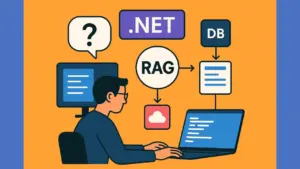Introduction
In January, Microsoft made headlines with plans to pour $80 billion into AI infrastructure. Just weeks later, the tech giant began canceling massive data center projects. Facilities that were set to consume 2 gigawatts of electricity in the US and Europe were suddenly scrapped. These aren’t small cuts. They’re a sharp reversal that’s sending shockwaves through the tech, real estate, and energy sectors.
What does this mean for AI’s future? Why would a company that seemed so confident in AI growth just months ago now pull back so dramatically? These questions are at the heart of a bigger issue: are we on the edge of an AI infrastructure bubble?
1. The $80 Billion Dream That Cracked
Microsoft’s initial announcement painted a picture of unstoppable AI growth. Billions were to be invested in expanding capacity, training models, and powering cloud services. The company was betting big on a future dominated by AI workloads, generative applications, and cloud-delivered intelligence.
But by March, Microsoft began abandoning several data center projects. These weren’t just ideas on paper. Many were already in advanced planning stages. Land had been acquired, permits filed, and partnerships established.
Pulling the plug this early suggests a major change in demand forecasts. Microsoft, known for its data-driven decisions, likely spotted troubling trends. Perhaps internal data pointed to slowed adoption, or maybe cloud clients weren’t consuming AI services as aggressively as expected.
This isn’t a delay. It’s a retreat. The scale of these cancellations signals more than operational reshuffling. It points to shifting expectations around AI’s near-term payoff. The AI infrastructure surge may have run ahead of actual customer needs.
2. Signals from the Inside: When Tech Titans Pull Back
When industry leaders make dramatic investment shifts, they usually know something outsiders don’t. Microsoft has a history of calculated bets, not panic moves. A pullback of this magnitude indicates internal metrics aren’t aligning with the public AI hype.
Companies like Microsoft don’t move billions of dollars on whims. They analyze user trends, usage rates, revenue generation, and long-term risk. If their models showed that continued investment in large-scale infrastructure wouldn’t deliver expected returns, pulling back is the only responsible choice.
This mirrors past tech bubbles. In each, companies overbuilt based on inflated expectations. Then came a quiet exit when numbers didn’t match narratives. From dot-com to blockchain to VR, we’ve seen this movie before — rapid acceleration followed by sudden deceleration.
The AI gold rush, it seems, may be entering its reality check phase. That doesn’t mean AI is dead. But it does suggest the market is normalizing. Reality is replacing hype.
3. Tsai’s Warning and the Stargate Syndrome
Just weeks ago, Joe Tsai, chairman of Alibaba Group, issued a clear warning. He described current data center investments as “the beginning of some kind of bubble.” His concern wasn’t abstract. He pointed directly at the enormous figures being tossed around in the US market.
One example is the Stargate initiative, a $500 billion project aiming to become the backbone of AI computing. This isn’t just a bold move; it’s a moonshot. But Tsai called this and other mega-projects “entirely unnecessary,” arguing that companies are building well beyond what the market currently demands.
His comment cuts deep. When a competitor’s leader questions the need for such infrastructure, it’s not a random opinion. It’s likely grounded in real data, internal forecasts, and firsthand conversations with enterprise clients.
Alibaba’s stock dipped nearly 4% after Tsai’s comments. That reaction wasn’t just about one company. It reflected broader investor anxiety. If AI infrastructure is overbuilt, many firms could face major financial fallout.
Investors are starting to wonder: are these billion-dollar facilities going to become stranded assets? Just because you can build at scale doesn’t mean you should. Demand must justify capacity.
4. OpenAI’s Financial Struggles
OpenAI, Microsoft’s key partner in AI, is reportedly on track to lose $5 billion in 2025. That figure is astonishing for a company at the forefront of what many claim is the next great technological revolution.
Despite billions raised and strong brand recognition, OpenAI still struggles to make its operations profitable. Training and maintaining massive language models costs an enormous amount of money. Infrastructure, electricity, cooling, talent – the bills add up fast.
The challenge is monetization. While products like ChatGPT have gained traction, they haven’t yet unlocked scalable profits. Most users are still on free plans, and enterprise deals take time to close. The revenue curve hasn’t caught up with the expense curve.
Reuters recently reported increased skepticism around AI spending, especially after DeepSeek launched a comparable model at a fraction of the cost. That type of disruption is dangerous. When others can achieve similar results more cheaply, your business model comes under pressure.
When innovation can be replicated cheaply, high-cost pioneers lose their edge. If OpenAI can’t find a sustainable business model, it risks becoming an expensive R&D lab rather than a revenue engine. The hype around AI may be real, but profits are proving elusive.

5. Venture Capital vs. Business Reality
For years, AI startups and platforms thrived on abundant venture capital. The promise of future returns justified billions in spending. Founders promised investors world-changing results. Boards approved massive expenditures with little near-term accountability.
But that narrative is cracking. Capital markets are tightening, and investors want real results. Interest rates are up. Cash is no longer free. Now, every dollar spent must show a path to ROI.
Burning billions without proven ROI is no longer acceptable. Startups must now show economic viability, not just technical capability. The era of “build it and they will come” is ending. This shift is putting pressure on AI companies to focus on cost-efficiency and monetization.
AI companies need to do more than wow with demos. They must answer hard questions. How do we scale? Where does the money come from? Can we achieve profitability within five years?
It’s not enough to innovate. AI firms must build models that pay for themselves. Without that, the industry risks a painful correction. This moment demands discipline.
Conclusion: The Bubble Isn’t Popping – It’s Deflating Quietly
AI isn’t going away. But the fever pitch of limitless investment is slowing down. Microsoft’s retreat signals a broader industry shift. Tsai’s warning and OpenAI’s losses reinforce this theme. The tech world is waking up to a hard truth: long-term success requires sustainable economics.
As someone with 25 years in the industry, I’ve learned to watch behavior, not headlines. When insiders start backing off, it usually means they see risks the rest of us haven’t yet accepted.
The AI revolution is real. But it must be grounded in real value, not hype. Companies that fail to adapt to this new reality will fade, no matter how innovative their tech.
The parallels to past tech cycles are hard to ignore. Grand visions often precede hard corrections. But corrections aren’t failures — they are adjustments. They separate lasting innovation from speculative noise.
For readers and entrepreneurs following AI trends, this is a pivotal moment. Stay cautious. Focus on models that generate value, not just headlines. The age of wild spending is over. It’s time to build responsibly.
And if you’re looking for more grounded analysis on emerging tech trends, follow StartupHakk — where hype meets hard truth. Learn to spot signals before they become headlines.




